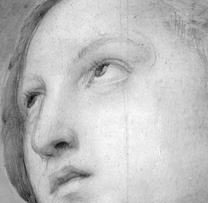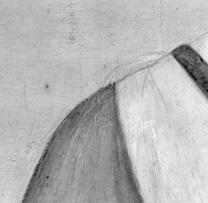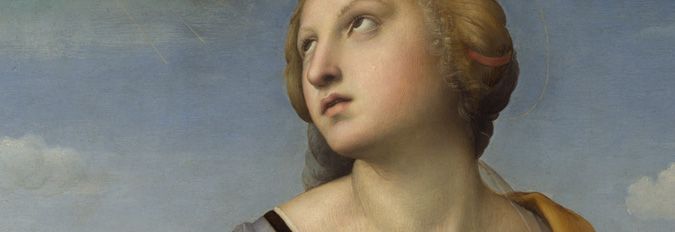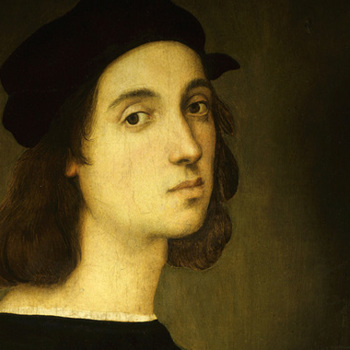Before artists began working on a panel or canvas they usually explored ideas on paper. The preparatory sketches for Raphael’s painting of Saint Catherine provide a useful insight into this creative process.
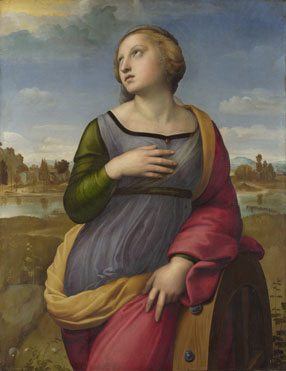
Two sheets of drawings (currently at the Ashmolean Museum in Oxford) contain a number of preparatory studies for the painting. A rapid sketch reveals that Raphael initially considered the subject for a full-length composition.
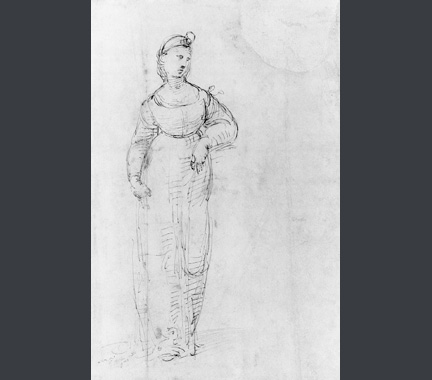
Raphael, 'Study for Saint Catherine', about 1507
The Ashmolean Museum, Oxford. Presented by a Body of Subscribers, 1846
© Copyright in this Photograph Reserved to the Ashmolean Museum, Oxford
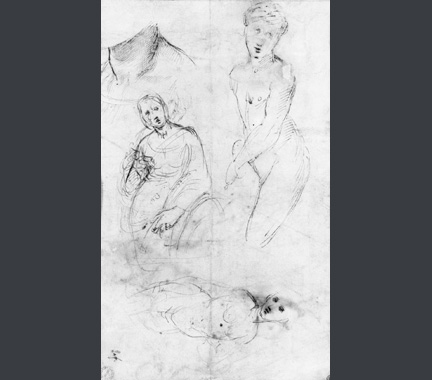
Raphael, 'Four studies for Saint Catherine', about 1507
The Ashmolean Museum, Oxford. Presented by a Body of Subscribers, 1846
© Copyright in this Photograph Reserved to the Ashmolean Museum, Oxford
In another drawing he explores his final composition, a three-quarter length portrait.
On the other side of the sheet of paper the head of Saint Catherine is studied in more detail.
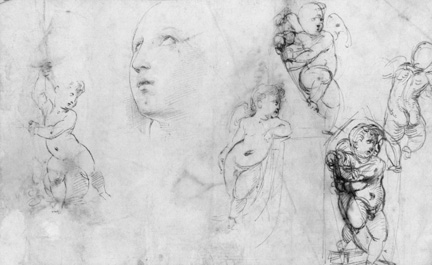
The Ashmolean Museum, Oxford. Presented by Body of Subscribers, 1846
© Copyright in this Photograph Reserved to the Ashmolean Museum, Oxford
Using cartoons
Often, Raphael relied not only on preparatory drawings but also on a cartoon. A cartoon is a full-size drawing made for transferring the composition to the painting support by pouncing or tracing.
Pouncing involves pricking the outlines of a cartoon and dusting powdered charcoal or pigment through the holes on to the support. The resulting dots would then be joined up to complete the design. Tracing involves blackening a sheet of paper with charcoal or black chalk. This paper is laid between the prepared panel and the drawing. The artist then follows the outline of the drawing with a stylus, creating a copy of the drawing on the panel below.
The Saint Catherine cartoon
A pricked cartoon for Raphael’s 'Saint Catherine' is kept at the Musée du Louvre in Paris.
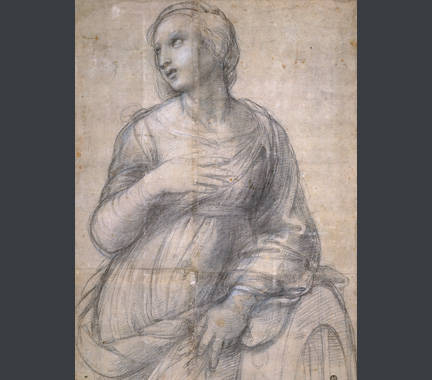
Musée du Louvre, Paris. Département des Arts Graphiques
© RMN, Paris. Photo Michèle Bellot
Raphael’s use of this cartoon to transfer his design has been confirmed by infrared examination of the painting, showing pounced dots under the paint along some of the outlines.
Raphael carefully followed most of the outlines of the cartoon in his painting. However, he changed the position of the head and the facial features. When he began to paint, he also omitted the knot of drapery on the saint’s right shoulder. The knot was faintly drawn in the cartoon and pricked for transfer. It is present in the underdrawing on the panel.
